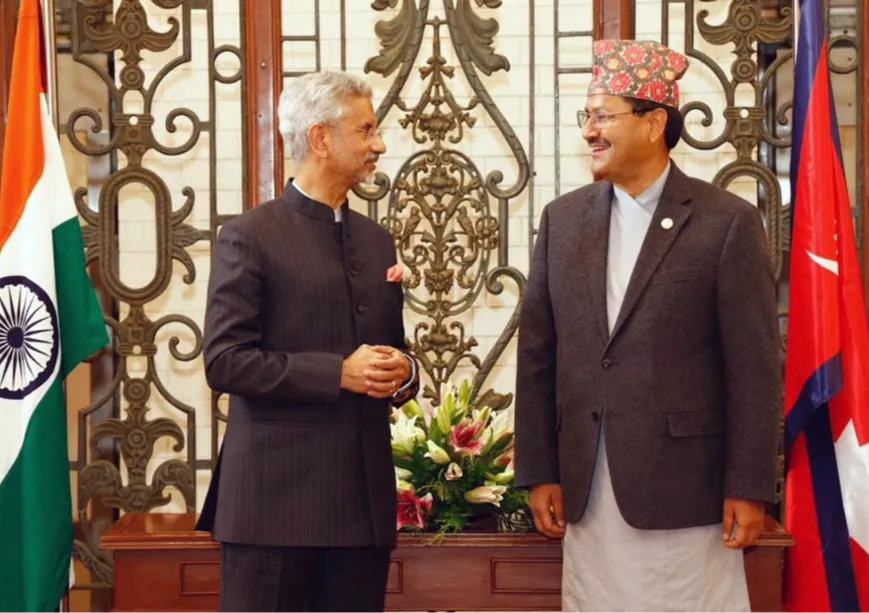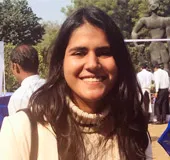
Marking his first visit of 2024, the External Affairs Minister, Dr S Jaishankar was in Kathmandu from 4-6 January for the seventh edition of the India-Nepal Joint Commission meeting. Building upon the positive momentum of the visit of Nepal’s Prime Minister Prachanda to New Delhi back in May 2023, the focus of the EAM’s visit was also on areas of mutual convergences—energy, trade, connectivity, people-to-people ties, cultural exchanges, development partnership—without letting the issues of contention affect overall cooperation.
Expanding cooperation: Outcomes of the meeting
During his 26 hours in the country, the EAM met the current Prime Minister and the President, Ram Chandra Poudel, and held the joint commission meeting with his Nepali counterpart, Mr N.K. Saud. He also met former prime ministers, Sher Bahadur Deuba and KP Sharma Oli. The joint commission is tasked with reviewing the overall bilateral relationship and deliberating on the questions of concern, if any. Both New Delhi and Kathmandu deemed the discussions ‘productive and comprehensive.’ Certain major outcomes like the agreement stipulating the export of 10,000 MW of electricity to India from Nepal, the Memorandum of Understanding (MoU) for cooperation on renewable energy, the virtual inauguration of three 132 kV joint cross-border transmission lines and the progress in the Detailed Project Report for the Pancheshwar Hydropower project were all expected to be taken up successfully in the meeting. An agreement between the New Space India Limited and the Nepal Academy of Science and Technology to facilitate the launch of the Munal Satellite on India’s Polar Satellite Launch Vehicle was also inked. The meeting also discussed plans to explore new cross-border transmission lines and infrastructure-led projects to increase the capacity of the cross-border lines and give a push to cooperation between the two countries.
An agreement between the New Space India Limited and the Nepal Academy of Science and Technology to facilitate the launch of the Munal Satellite on India’s Polar Satellite Launch Vehicle was also inked.
To help in the post-earthquake reconstruction in Jajarkot which was hit by a 6.4 magnitude earthquake in November, India offered NPR 10 billion for the survivors, a significant proportion of which would be offered under grant assistance. It also gave its fifth tranche of relief supplies including blankets, tents, sleeping bags, etc and the EAM inaugurated 59 new post-earthquake reconstruction projects in the education, health and cultural sectors including the Tribhuvan University Central Library.
In the last few years, because of India’s renewed emphasis on the neighbourhood under its Neighbourhood First policy, Nepal’s internal domestic political developments and China’s growing inroads in the country, both Kathmandu and New Delhi have focused more on win-win cooperation to make the most of the partnership. The issues that have historically dampened the positive momentum of the relationship like calls for revision of the 1950 treaty, the border issue and unilateral cartographic actions, the report of the eminent persons group, etc. have not been highlighted extensively in the talks between the political leadership. But still, some sections of Nepal’s polity have been demanding their leadership to raise these concerns with India. While the Nepalese Prime Minister and the EAM both agreed that these issues were tabled in the meeting of the joint commission, there was no significant breakthrough regarding any of these issues. The request for getting access to the air routes for flights taking off from the Pokhara International Airport, which was taken up in May 2023 as well, also saw no further progress, with India unwilling to give air access. On the question of the boundary issue, the Nepali FM pegged ‘dialogue and diplomatic initiatives’ as the way forward in stemming the differences.
The issues that have historically dampened the positive momentum of the relationship like calls for revision of the 1950 treaty, the border issue and unilateral cartographic actions, the report of the eminent persons group.
Multifaceted development partnership Addressing the concerns
India has an extensive development partnership with Nepal. Through its Grants and Lines of Credit (totalling US$1.65 billion as of August 2023), New Delhi has supported the development of large and medium-scale infrastructure projects in the country related to health, education, connectivity, etc. While India has undertaken several projects inside the country, in the recent joint commission meeting, the Nepali side highlighted the delay in the completion of certain projects funded through India’s Lines of Credit through the Exim Bank. Currently, around a dozen road construction-related projects are under progress. This delay is said to be due to certain conditions set in the loan agreement. Back in November 2023 as well, the Department of Roads, Nepal in its annual report urged India to reduce the content requirement —which stipulated a minimum percentage of Indian-origin goods and services in the construction of a project—from 50 percent to 30 percent. This was because the bureaucratic processes involved delayed the final implementation of the projects. Similar demands have also been raised for India’s projects in Bangladesh.
India’s development partnership is also reflected in its ‘High Impact Community Development Projects’ (erstwhile ‘small development projects’) in Nepal, which completed 23 years last year. Under this portfolio, New Delhi has completed 476 projects of the 535 that it took up. At the meeting of the joint commission, the two sides formalised an increase in the per-project grant under the scheme, from NPR 50 million to NPR 200 million. Intended to address the shortfall in resources, the increase was ratified back in December 2023. But despite this, the agreement was criticised and questions were raised about the ‘lax vetting process’ owing to which India would be able to start new projects on its whim and gain ‘undue influence.’ The Prime Minister clarified how Kathmandu has similar modalities with other countries as well like China, the United Kingdom, the United States (US), Australia, etc. He restated that for any project, the local or provincial governments would need to send the projects to the finance ministry for approval which will then consequently ask the Indian government to implement the projects based on priority. A monitoring mechanism constituting the government entities and the Indian embassy would also be set up.
As per Nepal’s Foreign Minister, the timely completion of India-supported projects in Pancheshwar, West Seti, Arun III, and Upper Karnali will help the state in limiting the outflow of people going abroad as they would create more opportunities inside the country.
This is reflective of how, while there is a consensus on the need for India to follow through on its infrastructure and development-related commitments and increase its investments in Nepal, some concerns about the scope and nature of the projects that are undertaken also persist. As per Nepal’s Foreign Minister, the timely completion of India-supported projects in Pancheshwar, West Seti, Arun III, and Upper Karnali will help the state in limiting the outflow of people going abroad as they would create more opportunities inside the country. While India was responsive to the question of reviewing the conditions under Exim Bank granted loans, it is important for the two sides to together address some bottlenecks which delay the completion of projects and take steps to mend the trust deficit.
The successful signing of the long-term power trade agreement and its potential in giving a push to the prospect of tripartite cooperation between Nepal, India as well as Bangladesh and the leaps taken in increasing digital connectivity will shape the bilateral relationship in the coming months. In this current geopolitical climate, it is incumbent on both Kathmandu and New Delhi to leverage the political will and expand cooperation, ensuring mutual benefits for both the countries.
Shivam Shekhawat is a Junior Fellow with the Strategic Studies Programme at the Observer Research Foundation
The views expressed above belong to the author(s). ORF research and analyses now available on Telegram! Click here to access our curated content — blogs, longforms and interviews.




 PREV
PREV


